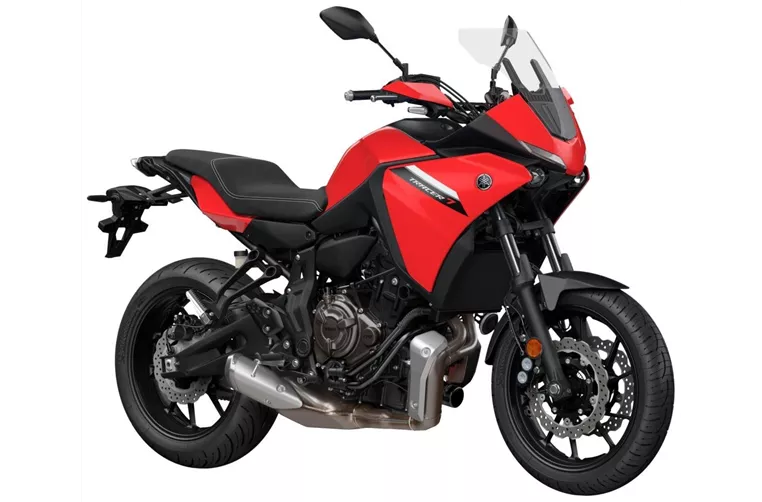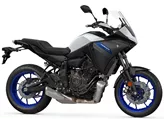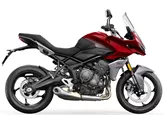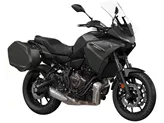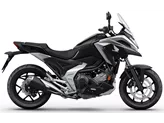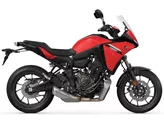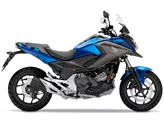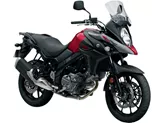Yamaha Tracer 700 2016 vs. Yamaha Tracer 7 2022

Yamaha Tracer 700 2016
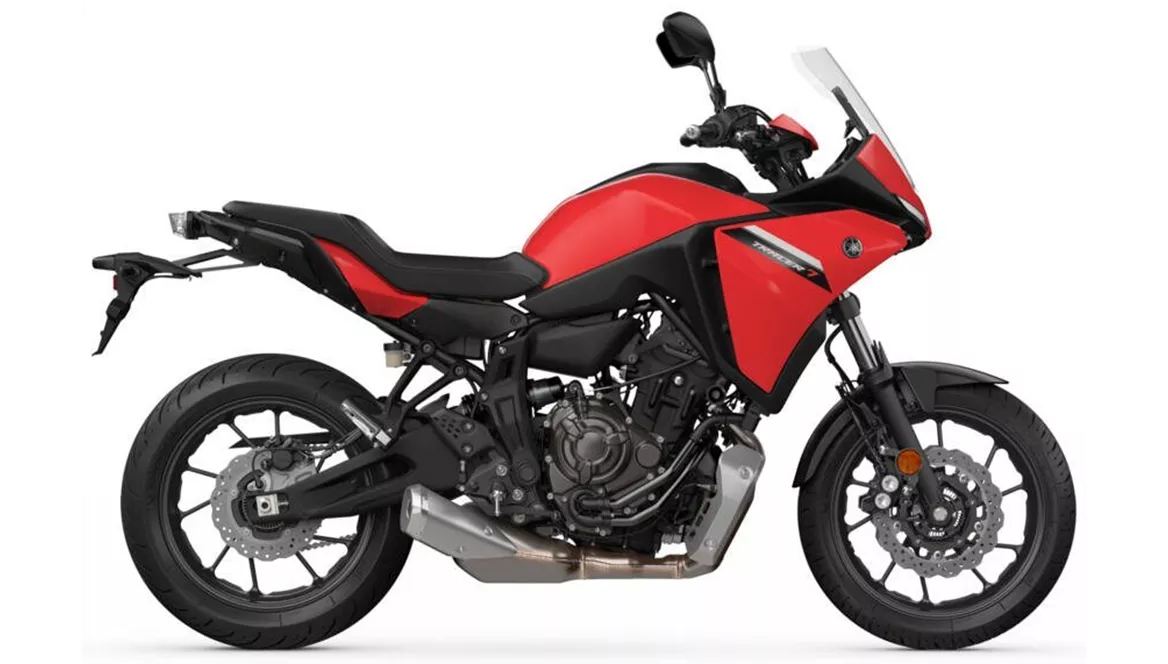
Yamaha Tracer 7 2022
Overview - Yamaha Tracer 700 2016 vs Yamaha Tracer 7 2022
The Yamaha Tracer 700 model year 2016 and the Yamaha Tracer 7 model year 2022 are both sport touring motorcycles with similar technical specifications. They both have an in-line engine with a displacement of 689ccm and a 4-stroke, 2-cylinder configuration. The engine power and torque are also similar, with the 2016 model producing 75 HP and 68 Nm, and the 2022 model producing 73.4 HP and 68 Nm.
In terms of suspension, both models feature a telescopic fork front suspension with a travel of 130mm. The rear suspension consists of a swing arm with a monoshock, but the 2022 model has a slightly longer travel of 142mm compared to the 130mm of the 2016 model.
The chassis of both models is made of steel, providing a sturdy and reliable frame. The front brakes are double disk with a diameter of 282mm, ensuring strong stopping power. Both models are equipped with ABS for advanced rider assistance.

Yamaha Tracer 700 2016
In terms of dimensions and weights, the front and rear tire widths and diameters are the same for both models, with a width of 120mm and a diameter of 17 inches for the front tire, and a width of 180mm and a diameter of 17 inches for the rear tire. The wheelbase of the 2022 model is slightly longer at 1460mm compared to the 1404mm of the 2016 model. The seat height is also slightly higher for the 2022 model at 840mm compared to the 835mm of the 2016 model. Both models have a kerb weight of 196kg and a fuel tank capacity of 17 liters.
Now let's discuss the strengths and weaknesses of each model. The Yamaha Tracer 700 2016 is praised for its perfectly dimensioned design, providing good wind protection and ride comfort. It is also known for being easy to handle, making it suitable for riders of all skill levels.
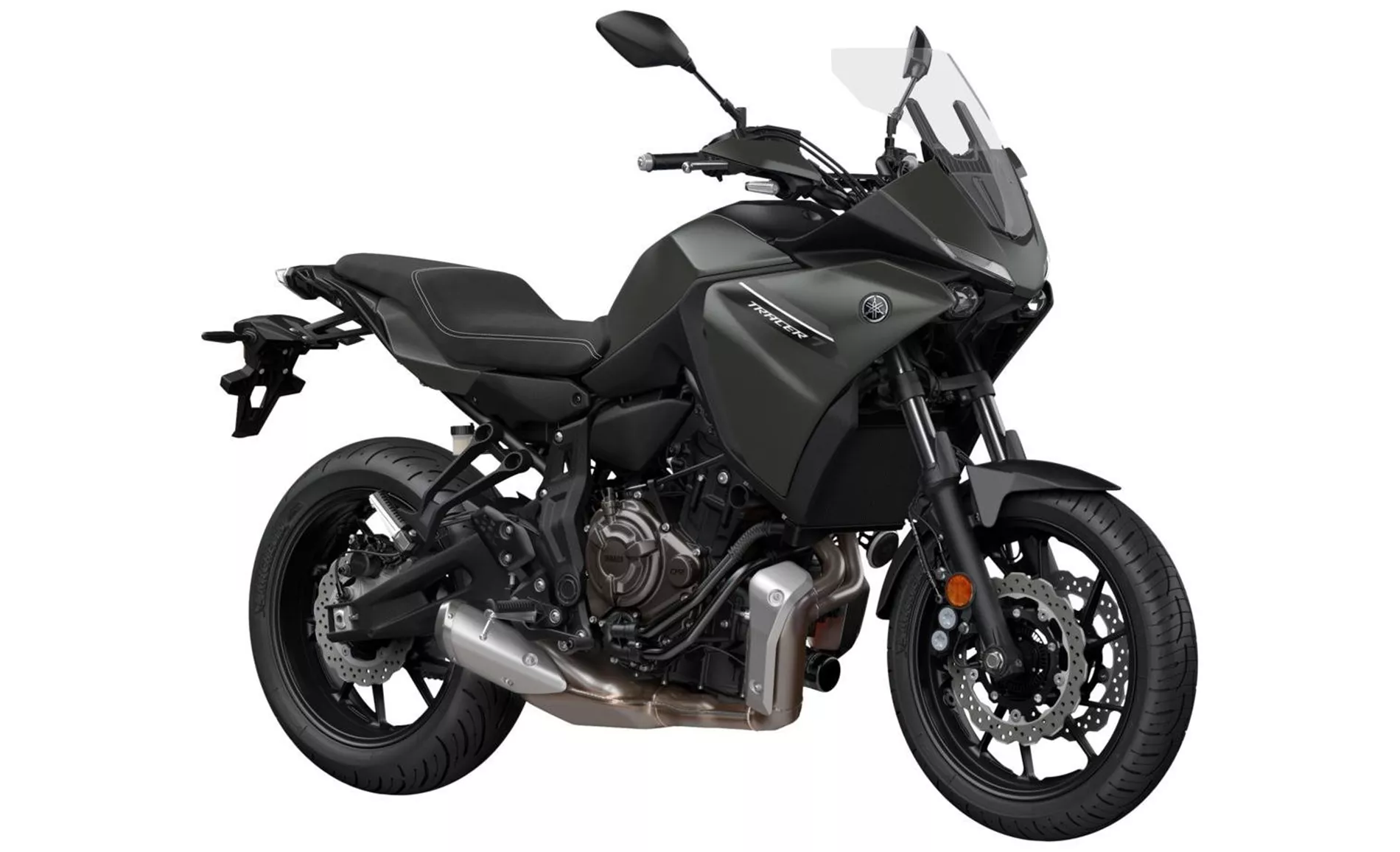
Yamaha Tracer 7 2022
On the other hand, the Yamaha Tracer 7 2022 boasts a more powerful engine and agile handling, making it a thrilling ride. The chassis is adjustable, allowing riders to customize their riding experience. The ergonomics are comfortable, ensuring a pleasant ride even on long journeys. Additionally, the 2022 model has a cool look and offers a large selection of accessories for customization.
However, the 2016 model does have a few weaknesses. It requires relatively long legs due to its seat height, and the brakes are considered average in terms of performance. On the other hand, the 2022 model has some weaknesses as well. It experiences load change at low revs, and the brakes are considered weak. Additionally, it lacks electronics and offers less wind protection compared to its competition.
In conclusion, both the Yamaha Tracer 700 2016 and the Yamaha Tracer 7 2022 are sport touring motorcycles with similar technical specifications. While the 2016 model offers good wind protection and ride comfort, as well as easy handling, the 2022 model boasts a more powerful engine, agile handling, and a comfortable ergonomic design. However, it does have some weaknesses such as load change at low revs and weak brakes.
Technical Specifications Yamaha Tracer 700 2016 compared to Yamaha Tracer 7 2022
Pros and Cons in comparison
Pros and Cons in comparison
Yamaha Tracer 700 2016

The Yamaha Tracer 700 is clearly more mature than the other MT-07 models. It seems bigger and a little more ponderous, but also more complete and confident. It's a really good touring bike that doesn't leave you wanting for anything.
Yamaha Tracer 7 2022

If you are looking for a motorbike under 10,000 euros with an excellent engine, cool looks and comfort, the Yamaha Tracer 7 is the right choice. The low weight and adjustable chassis make the Tracer 700 a real cornering machine. Purists will be pleased to know that, apart from ABS, there are no electronic aids, but when you look at the competition, this no longer seems quite state-of-the-art.
Price Comparison Avarage Market Price Yamaha Tracer 700 vs Yamaha Tracer 7
There are a few key differences between a Yamaha Tracer 700 2016 and a Yamaha Tracer 7 2022. It takes less time to sell a Yamaha Tracer 700 with 102 days compared to 136 days for a Yamaha Tracer 7. Since model year 2016 1000PS.de editors have written 16 reviews for the Yamaha Tracer 700 and 6 reviews for the Yamaha Tracer 7 since model year 2021. The first review for the Yamaha Tracer 700 was published on 4/20/2016 and now has more than 26,400 views. This compares to more than 61,200 views for the first review on Yamaha Tracer 7 published on 11/8/2020.

